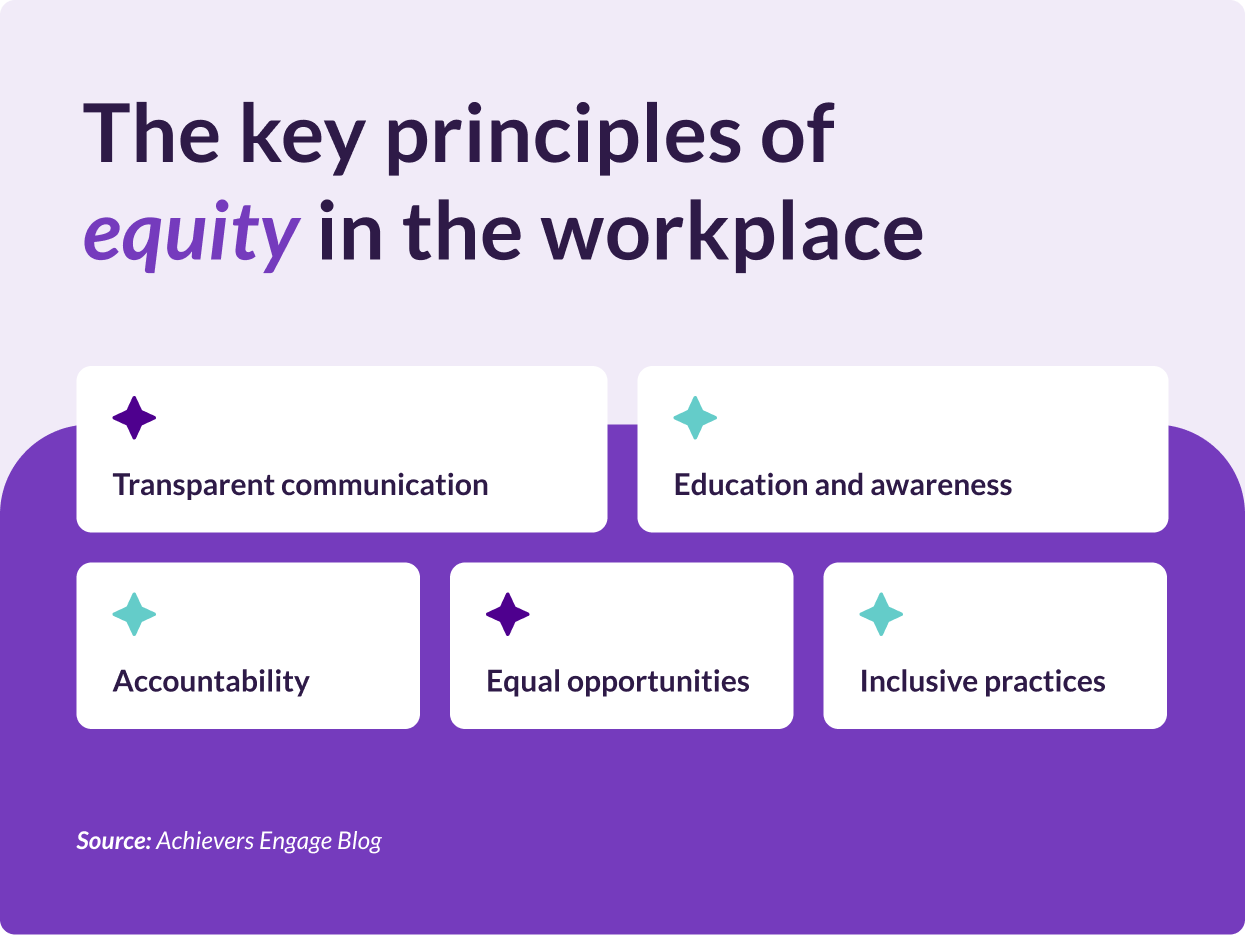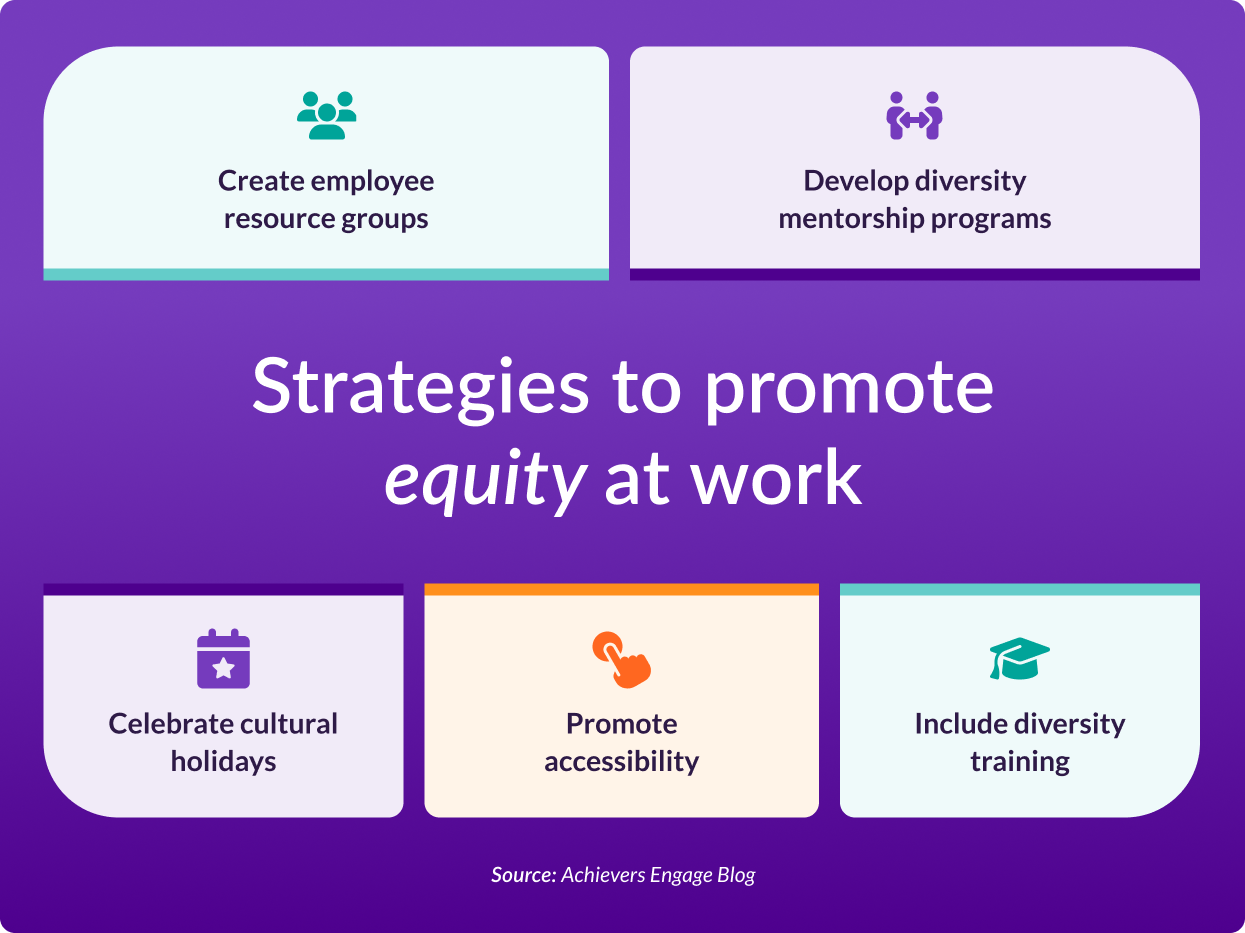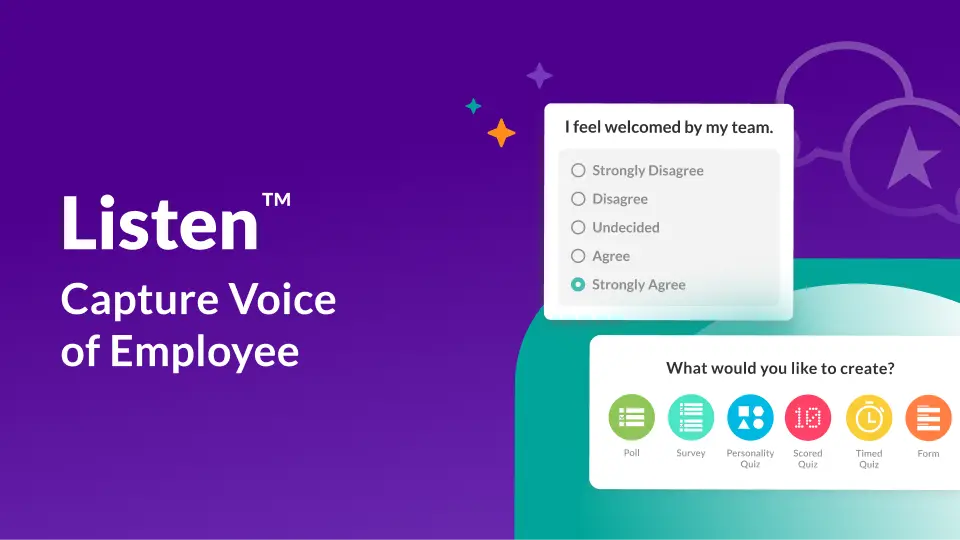Table of contents
Understanding equity in the workplace goes beyond simply promoting diversity; it involves developing systems and practices that ensure fair access to resources, opportunities for advancement, and overall treatment of employees.
Recent data indicates that while many organizations have implemented diversity, equity, and inclusion (DEI) initiatives, progress in workforce diversity remains modest. An analysis of 13 million jobs across S&P 500 companies revealed only slight changes since 2020, with a minor decrease in the proportion of white employees and small gains for Asian and Hispanic workers. Notably, white men continue to hold about half of senior management roles, with the representation of non-white senior managers increasing marginally from 22% to 26%. Black and Hispanic employees remain underrepresented in executive positions relative to their overall workforce presence.
These findings underscore the importance of not only establishing DEIB policies but also actively monitoring and assessing their effectiveness to ensure meaningful progress toward workplace equity.
What is equity in the workplace?
Equity in the workplace is all about creating a fair and inclusive environment. It’s where employers acknowledge and cater to the unique needs of employees and ensure they have access to opportunities, resources, and career advancement. All the while, identifying and eliminating any barriers that prevent some groups from fully contributing.
What is equality?
When discussing equity in the workplace, the word equality often comes up. While the two are often used interchangeably and have some overlap in meaning, they have fundamental differences.
Equality involves treating all employees the same, providing everyone with identical resources and opportunities — aiming to create a level playing field. On the other hand, equity acknowledges that every employee has unique needs, and so resources are tailored to their specific circumstances.
Why is equity important in the workplace?
Equity is important in the workplace as it champions fairness and fosters an inclusive environment where all employees can succeed.
A 2023 survey by the Coalition for Diversity and Inclusion in Scholarly Communications (C4DISC) found that 84% of respondents felt respected and valued in their workplace. However, many individuals from historically marginalized groups reported experiencing less inclusive environments, indicating ongoing challenges in achieving true workplace equity.
Here are some reasons why equity is important in the workplace:
- Increased employee engagement: When employees feel supported and valued, they’ll experience more motivation and enthusiasm for their work.
- Improved team collaboration: Equitable and inclusive work environments show that diverse perspectives are valued and appreciated, putting teamwork and mutual respect at the forefront.
- Higher productivity: Employees that have access to resources tailored to their unique needs are likely to perform better at work.
- Attracting top talent: An equitable workplace widens the pool of top talent to recruit from, as it boosts the company’s reputation and brand image.
- Employee wellbeing: By employing equitable policies and practices, it contributes to employee health and happiness.

What are examples of equality in the workplace?
Equality in the workplace ensures that all employees have access to fair treatment, resources, and the same career advancement opportunities, regardless of their background.
Examples of equality in the workplace might include:
- Equal pay: Employees in the same role should be compensated equally, regardless of gender or ethnicity.
- Inclusive hiring practices: Using recruitment strategies such as expanding employee recruitment channels and working with equality-focused recruitment partners.
- Inclusive policies: Establishing policies in support of employee’s diverse needs, such as parental leave or flexible working schedules.
- Anti-discrimination training: Offering training and educational programs that promote mutual respect and address biases.
- Fair promotion opportunities: Advancement opportunities are awarded based on merit, instead of relationships and other personal characteristics.
Strategies to promote equity at work

- Diversity mentorship programs: Develop mentorship programs connecting senior leadership with employees from underrepresented groups. The programs support internal career development while removing barriers in professional growth for these groups.
- Employee Resource Groups (ERGs): ERGs are a safe space for employees with shared backgrounds, identities, and interests to share and express themselves. Creating these groups can also lead to the development of more inclusive policies while contributing to a sense of belonging.
- Diversity training: Run interactive DEIB training programs for both employees and leaders that focus on addressing unconscious biases, cultural sensitivity, and inclusive leadership.
- Celebrate cultural holidays: Acknowledge and celebrate religious and cultural holidays in the workplace. An example of how to do this could be to offer flexible time off for employees to celebrate holidays that are meaningful to them.
- Promote accessibility: Make sure workplace facilities and digital platforms are accessible to all. This may include accessibility modifications such as ramps or ergonomic workstations, as well as digital tools like screen readers.
- Examine onboarding: Review and make improvements to your onboarding processes to make sure they’re welcoming and inclusive to new hires from diverse backgrounds.
- Update hiring practices: Review and frequently update hiring practices to eliminate biases. This can be done through using structured interviews or inclusive hiring committees to make sure candidates are fairly assessed.
- Recognize unconscious bias: Provide tools and training to help employees and leaders recognize unconscious bias and develop strategies for objective decision-making in hiring and promotions.
- Promote DEIB: Leaders should actively promote DEIB policies and programs by communicating transparently, setting goals, tracking progress, and celebrating successes along the way.
- Company culture: Cultivate a company culture that prioritizes inclusivity, fairness and mutual respect. Encourage transparent communication, accountability, and the importance of calling out discriminatory behavior.
Best ways to measure equity in the workplace
- Consider pay equity: Compare salaries across diverse groups – ensure that employees in comparable roles with similar levels of experience are receiving equitable pay.
- Review promotion rates: Determine if opportunities for advancement within your organization are fairly distributed among diverse demographic groups.
- Conduct surveys and gather feedback: Run frequent and timely surveys to gather feedback from employees on whether they feel the workplace is inclusive, fair, and if they believe they have access to equal growth opportunities.
- Assess recruitment practices: Make sure that hiring processes are inclusive, while giving all candidates an equal opportunity to be considered.
- Review and report findings: Track the progress of equity programs over time, review and report on metrics, and make the necessary improvements to strategies.
Overcoming common obstacles with equity in the workplace
Building a more equitable workplace requires organizations to identify and address barriers, implement best practices, and ensure strong leadership involvement in equity initiatives.
Identifying barriers to equity
Workplace equity is often challenged by unconscious bias, inequitable policies, and insufficient data. Unconscious bias can impact hiring and promotion decisions, making training programs and standardized evaluation criteria essential. Inequitable policies may create unintended disparities, so regular reviews and updates are necessary to maintain fairness. Additionally, organizations should collect and analyze data on compensation, hiring, and promotions to identify and close equity gaps.
Implementing solutions and best practices
To foster equity, companies should prioritize inclusive leadership, standardized evaluations, and flexible work arrangements. Leaders play a key role by ensuring fair representation at senior levels and modeling inclusive behaviors. Bias training helps employees recognize and mitigate unconscious bias, while standardized evaluation criteria ensure objectivity in hiring and promotions. Flexible work policies also support employees with diverse needs, including caregivers and individuals with disabilities.
The role of leadership in workplace equity
Leadership is central to advancing equity, as executives and managers set the tone for company culture. When leaders actively promote inclusivity and fairness, they build trust and credibility among employees. They are responsible for implementing equitable policies, leading bias training, and embedding fairness into the organization’s core values. A strong leadership commitment ensures workplace equity becomes a lasting and meaningful part of company culture.
Gather valuable insights for your equity programs
One of the best practices for promoting fairness in the workplace is to collect employee feedback to gauge their perceptions of the DEIB programs currently implemented in your organization. Research shows that listening to employees and taking action on feedback on a timely basis helps to boost engagement while also driving business results.
Here’s where Achievers Listen comes in. It’s a powerful tool for getting a pulse on employee sentiments while also understanding the unique needs of diverse groups. With “Listen,” organizations can:
- Pinpoint and tackle any issues related to equity in the workplace
- Tailor strategies, practices, and policies to better address the needs of employees from diverse backgrounds.
- Make data-informed decisions to create a work environment where every employee feels supported, valued, and heard
Begin nurturing a culture of ongoing feedback at your organization and book a demo today!
Discover how to build a culture of recognition at your organization
Read the recognition report
